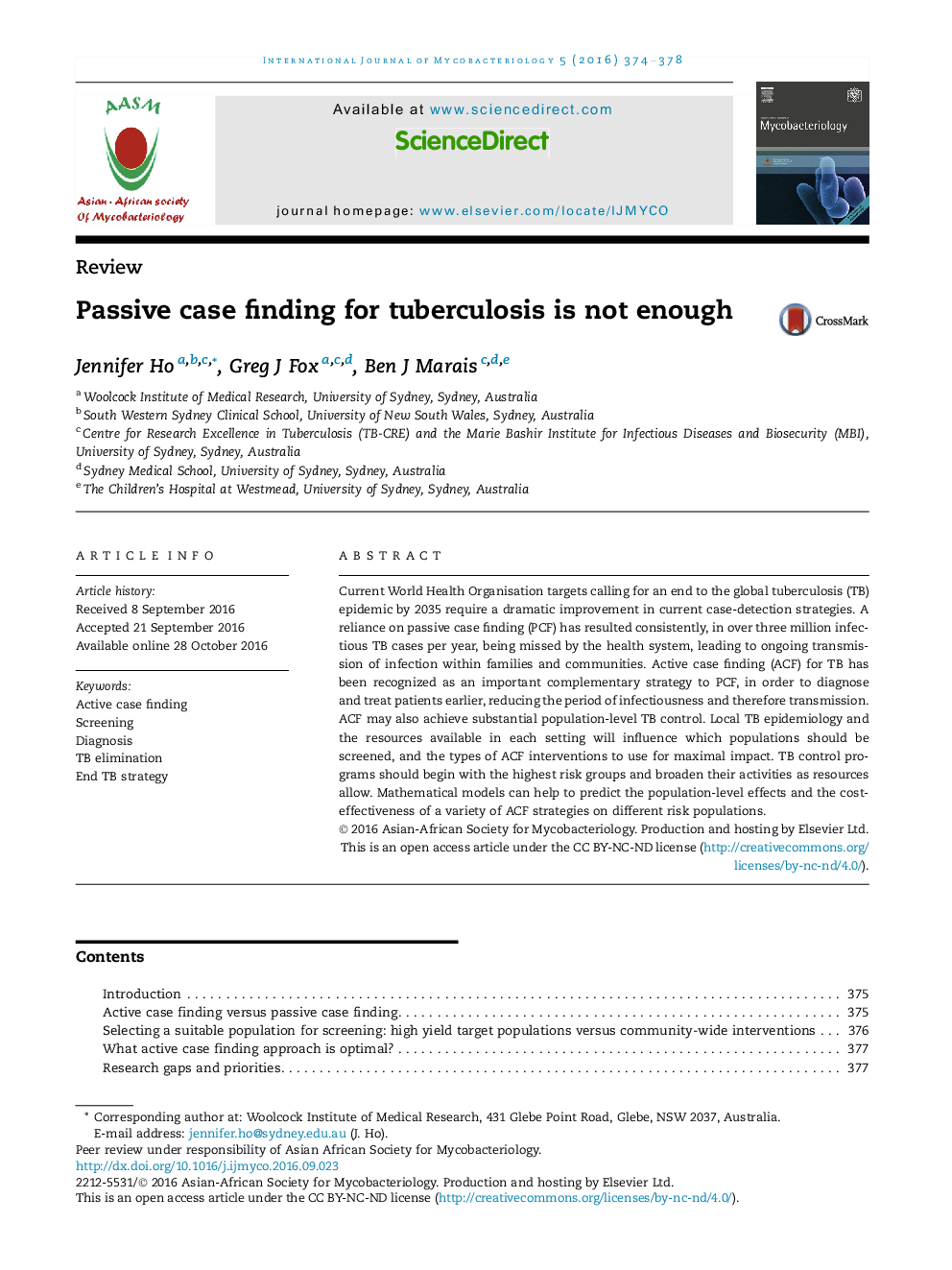| Article ID | Journal | Published Year | Pages | File Type |
|---|---|---|---|---|
| 8746009 | International Journal of Mycobacteriology | 2016 | 5 Pages |
Abstract
Current World Health Organisation targets calling for an end to the global tuberculosis (TB) epidemic by 2035 require a dramatic improvement in current case-detection strategies. A reliance on passive case finding (PCF) has resulted consistently, in over three million infectious TB cases per year, being missed by the health system, leading to ongoing transmission of infection within families and communities. Active case finding (ACF) for TB has been recognized as an important complementary strategy to PCF, in order to diagnose and treat patients earlier, reducing the period of infectiousness and therefore transmission. ACF may also achieve substantial population-level TB control. Local TB epidemiology and the resources available in each setting will influence which populations should be screened, and the types of ACF interventions to use for maximal impact. TB control programs should begin with the highest risk groups and broaden their activities as resources allow. Mathematical models can help to predict the population-level effects and the cost-effectiveness of a variety of ACF strategies on different risk populations.
Related Topics
Life Sciences
Immunology and Microbiology
Virology
Authors
Jennifer Ho, Greg J Fox, Ben J Marais,
